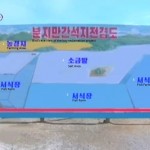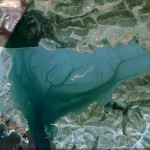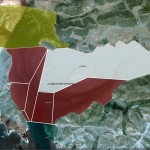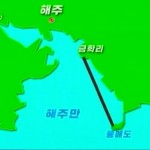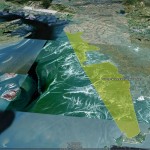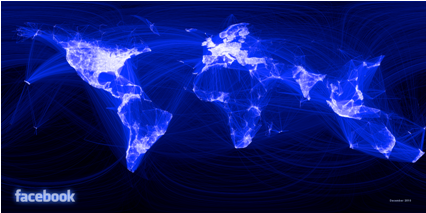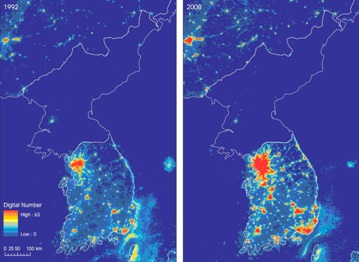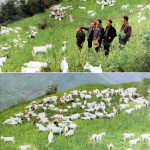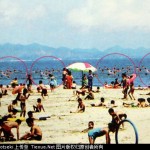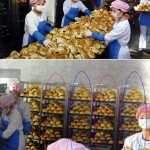UPDATE 3: The JoongAng Daily (2/12/2011) reports on comments made by Robert King:
King explained that in the past, the U.S. had agreed to give North Korea 500,000 tons in food aid, but was only able to give 170,000 tons as North Korea refused the rest and ordered foreigners who had entered North Korea to deliver the aid to leave.
The envoy also said that it has not yet been decided whether the U.S. will grant food aid to the North and that three prerequisites must be fulfilled if it does.
The three conditions, he explained, are whether a real demand for food truly exists in North Korea, whether the North’s need for food is on the same level as other countries in need of aid, and whether monitoring of the aid will be securely guaranteed. Only when these three prerequisites are met can the U.S. grant aid, King said.
UPDATE 2: According to the JoongAng Daily (2/9/2011) the North Koreans have made an official request for food aid to the US government:
North Korean deputy ambassador to the UN, Han Sang-ryol, requested U.S. food aid last month through Robert King, the U.S. special envoy for North Korean human rights, a diplomatic source told the JoongAng Ilbo yesterday.
Local analysts suspect that King, who is currently in Seoul, informed the South Korean government of the request and is discussing a joint response to it.
“Ambassador Han met King in New York on Jan. 14 and requested large-scale U.S. food aid for the North,” said the diplomatic source in Washington.
It is the first time in years that a behind-the-scenes diplomatic discussion between Pyongyang and Washington on aid has come to the surface. U.S. food aid to the North has been suspended since March 2009 after the Kim Jong-il regime rejected a U.S. proposal to increase the number of Korean-speaking food-distribution monitors to make sure aid was getting to the public.
Han told King that the North was willing to enhance international monitoring of food aid “as much as the U.S. wants,” the source said.
King, who came to Seoul on Sunday, started meetings with Seoul officials yesterday, including Wi Sung-lac, the top envoy on North Korean nuclear issues. At a brief media conference after the meeting with Wi, King did not elaborate on the purpose of his visit or his discussion with the South Korean envoy, saying only it was “very good, very serious and a very thoughtful discussion.”
When asked whether food assistance to the North was on the agenda, King said they “talked about a lot of issues.”
“[It is] extremely important for the U.S., as we pursue our policies toward North Korea, to coordinate with the government of South Korea,” King said. “We have a close working relationship, we are able to work together well on issues, we share our analysis, we share our ideas in terms of making progress.”
The official United States stance, as U.S. Assistant Secretary of State Kurt Campbell said earlier this month, is that it does not have a plan to resume food aid to the North for now.
“The U.S. does not think the North has met conditions to get U.S. food aid,” the source said.
And even if Washington decides to resume aid, it will take time because of congressional procedures, the source said. But some analysts see the possibility of change, citing some opinions in the U.S. State Department in favor of engaging the North with aid to sway its attitude on other issues, including denuclearization.
UPDATE 1: According to the Donga Ilbo (2/6/2011):
The U.S.-based Radio Free Asia says the U.S. government and nongovernmental organizations are discussing the resumption of food aid to North Korea.
Quoting diplomatic sources in the U.S., the broadcaster said Washington has not decided to resume food aid to Pyongyang but is having many talks and discussions on the issue.
Voice of America said Friday that the World Food Program and the U.N. Food and Agriculture Organization, both of which are under U.S. influence, also plan an additional survey of the North`s food situation for about a month from Feb. 10.
In an interview, Dr. Kisan Gunjal of the food organization said he will survey the North’s food security and crop situations from Feb. 10 to March 12 at Pyongyang’s official invitation.
In a phone interview with The Dong-A Ilbo, an official at a South Korean aid group said, “The U.S. has asked South Korean non-governmental organizations about North Korea’s crop and food supply situations in 2011 since the North’s artillery provocation on Yeonpyeong Island in November.”
Washington, however, remains officially cautious. U.S. State Department spokesman Philip Crowley told a news briefing Monday that the U.S. government has no immediate plans to provide humanitarian aid to the North.
ORIGINAL POST: According to the Donga Ilbo (1/31/2011) the US and DPRK are talking food aid once more:
The U.S. and North Korea have begun their third round of food diplomacy, with Washington considering resuming food aid to Pyongyang.
The U.S. has halted food aid to the North twice since its first provision in 1996 after blaming Pyongyang for diverting the aid.
The North has always asked for food aid first since North Korean leader Kim Jong Il confronted a series of crises in the early 1990s, when the former Soviet Union and China stopped economic assistance to the Stalinist country.
His father and the North`s founder Kim Il Sung died in 1994. When the North was devastated by floods and other natural disasters nationwide, Kim Jong Il ordered state cadres to beg the U.S. for help.
The North Korean Foreign Ministry then formed a committee for flood damage and went hat in hand to Washington. The Clinton administration provided 19,500 tons of food through the World Food Program in 1996, expecting the North to implement the 1994 Agreed Framework and be docile in talks for the repatriation of remains of American soldiers killed in action in the Korean War.
Washington increased its food aid from 177,000 tons in 1997 to 695,000 tons in 1999. In 2000, a joint communiqué between the North and the U.S. was signed.
North Korea, however, diverted the food aid in ignoring U.S. and international principles for humanitarian aid.
As public opinion in the U.S. worsened over the assistance, the George W. Bush administration slashed the aid volume from 350,000 tons in 2001 to 40,000 tons in 2003. The U.S. Congress demanded greater transparency in the distribution of the food aid in 2004, when it passed the North Korean Human Rights Act.
Rejecting the demand, Pyongyang expelled World Food Program staff in 2005. Washington opted not to provide food aid to Pyongyang in 2006.
Flexing its muscles in November 2006 by conducting its first nuclear test, North Korea again requested U.S. aid in 2008. The Bush administration, which was nearing the end of its term, chose to sit at the negotiating table with the North and offered 500,000 tons of food aid through the World Food Program.
The North received 169,000 tons of food by expanding the areas where food distribution is monitored and agreeing to allow more Korean-speaking monitoring personnel.
In early 2009, Pyongyang decided to test the newly inaugurated Obama administration by launching a long-range rocket and preparing for a second nuclear test. In March that year, the North expelled humanitarian aid groups, saying it would not be able to keep its promise of distribution transparency.
In fall last year, North Korea unveiled its uranium enrichment program and showed its centrifuges to the U.S. in a virtual threat to conduct its third nuclear test with uranium bombs if Washington failed to provide food.
What the U.S. will eventually do is attracting interest since South Korea is opposed to aid to the North.
Read the full stories below:
Pyongyang asks U.S. to restore food aid: source
JoongAng Daily
Kim Jung-wook, Moon Gwang-lip
2/9/2011
US, N. Korea begin 3rd round of food diplomacy
Donga Ilbo
1/31/2011
Radio Free Asia: US, NGOs discussing food aid to NK
Donga Ilbo
2/6/2011

